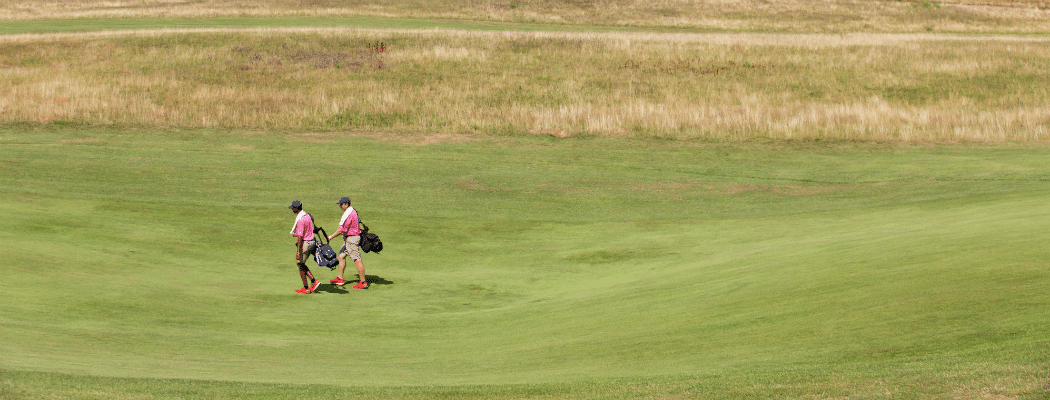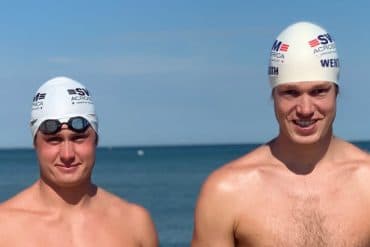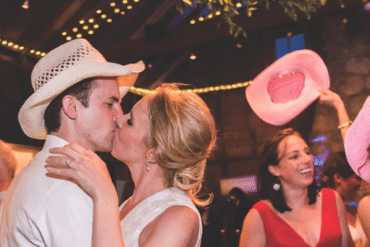How a caddie camp on Nantucket has helped tee up the leaders of tomorrow.
 Ninety years ago, caddie camps sprang up around New England to serve members of newly opened golf clubs in distant and isolated places. One such course was Sankaty Head Golf Club, which was created in 1922 on the far eastern edge of Nantucket Island. Set hard against the ’Sconset Bluff and Sankaty Head Lighthouse, the course was built as a true “Scottish links” course with little foliage, plentiful fescue and rolling hills. Members knew early on that they needed caddies to navigate the hills of their new course, but finding skilled caddies on an island with fewer than three thousand people was harder than double-eagling a par-five. So in 1930, Sankaty Head established its own caddie camp.
Ninety years ago, caddie camps sprang up around New England to serve members of newly opened golf clubs in distant and isolated places. One such course was Sankaty Head Golf Club, which was created in 1922 on the far eastern edge of Nantucket Island. Set hard against the ’Sconset Bluff and Sankaty Head Lighthouse, the course was built as a true “Scottish links” course with little foliage, plentiful fescue and rolling hills. Members knew early on that they needed caddies to navigate the hills of their new course, but finding skilled caddies on an island with fewer than three thousand people was harder than double-eagling a par-five. So in 1930, Sankaty Head established its own caddie camp.
The first caddies to arrive at Sankaty Head were a ramshackle collection of boys who found their way to the island from hardscrabble areas like Revere, Saugus and Roxbury. A feisty bunch, the campers lived in tents between the eleventh and thirteenth fairways. In these early years, the campers had little to no adult supervision. By 1960, they became so unreliable that they put the future of the camp in jeopardy. Fearing that golf itself at Sankaty Head might grind to a halt without caddies, the trustees of the club raised $5,000 from the membership to create the Sankaty Head Foundation in an effort to revamp the camp.
 The foundation’s Articles of Organization in 1961 outlined its purpose to “promote, stimulate, and encourage the education and general welfare of young men of high school or college age by establishing a free summer camp.” To further entice contributions, the foundation pursued tax-exempt status, which was granted in 1964 based on the criteria that a quarter of the forty-eight caddies attending the camp, then called “slum boys,” would come from underprivileged neighborhoods each year. Nowhere in the original documents or IRS filings was “caddieing” or even “golf” mentioned. Instead, this was to be a camp first and foremost; caddieing was simply how the campers would pay for their room and board at $3 a day.
The foundation’s Articles of Organization in 1961 outlined its purpose to “promote, stimulate, and encourage the education and general welfare of young men of high school or college age by establishing a free summer camp.” To further entice contributions, the foundation pursued tax-exempt status, which was granted in 1964 based on the criteria that a quarter of the forty-eight caddies attending the camp, then called “slum boys,” would come from underprivileged neighborhoods each year. Nowhere in the original documents or IRS filings was “caddieing” or even “golf” mentioned. Instead, this was to be a camp first and foremost; caddieing was simply how the campers would pay for their room and board at $3 a day.
To shape these boys into respectable young men the foundation in 1962 enlisted Norman Claxton, a former World War II Navy ship captain and then junior high principal in New Jersey, to become the first director of the new camp. As a Navy man, Claxton created a “quasi-military” environment that gave the campers the structure they needed. Reveille was at 7:00 a.m. sharp. Morning meal was at 7:30 in the mess hall, followed by inspection of bunks and quarters at 8:00. Campers then stood at attention and in formation as the American flag was raised. “First Bench,” an alphabetical list of the first twelve caddies of the day, was announced. Those not caddieing were relegated to “work party,” which might have entailed cutting the camp grass, shingling a hut or cleaning the one bathroom at camp called, naturally, The Head.

The camp thrived under Claxton’s leadership, bringing new boys into the ranks in the decades that followed. Many of these caddies found the camp thanks to teachers or parish priests who had convinced their parents to send their sons away from tough towns like Taunton, Massachusetts, or Paterson, New Jersey. Others, like Mike Dussault, heard about the camp from other kids in his neighborhood.
Born and raised in Taunton, Dussault was of French and Native American descent and lived among an array of other immigrated Americans. He learned about the caddie camp through two boys in Taunton named Joe Paulo and Dave Simas (Paulo went on to become a Massachusetts state trooper, while Simas served as an advisor to President Barack Obama and is currently the CEO of the Obama Foundation.) “I was fourteen and didn’t know anything about Nantucket,” recalled Dussault, who first came to the caddie camp in 1992. “We caddied or worked every day…I learned to fold my clothes all the same size for inspection, with the folds out. I still do that.”
Three summers at the caddie camp helped set the trajectory of Dussault’s life. After graduating from college and working in the music business in Los Angeles for twelve years, Dussault felt the pull back to Nantucket and returned to the island where he married and made his home. Now, most nights Dussault can be found tending bar at the SeaGrille where he enjoys telling a story or two from his days at the camp.
 Today, Sankaty Head represents the last caddie camp in the country. While professional caddies rightly carry on the tradition, the caddies of Sankaty Head represent a fleeting experience of growing up in the game. This summer, among the myriad of jobs lost on Nantucket due to the COVID-19 pandemic, a group of sixty teenaged summer visitors have found themselves not only out of work but also out of their camp. While they wait for reveille to be “up and at ’em” once again in the huts between the eleventh and thirteenth fairways, Sankaty Head’s caddies know that they’re only a swing away from another summer experience and lifetime memory.
Today, Sankaty Head represents the last caddie camp in the country. While professional caddies rightly carry on the tradition, the caddies of Sankaty Head represent a fleeting experience of growing up in the game. This summer, among the myriad of jobs lost on Nantucket due to the COVID-19 pandemic, a group of sixty teenaged summer visitors have found themselves not only out of work but also out of their camp. While they wait for reveille to be “up and at ’em” once again in the huts between the eleventh and thirteenth fairways, Sankaty Head’s caddies know that they’re only a swing away from another summer experience and lifetime memory.
Article author Cris Farley was a camper in 1965 and 1966 and caddied for Roy E. Larsen, a founder of the Nantucket Conservation Foundation, in the Sankaty Head member-guest tournament. Thanks to his experience at the camp and along with the guidance of Camp Director Claxton, Farley went on to become a midshipman at the U.S. Naval Academy.








